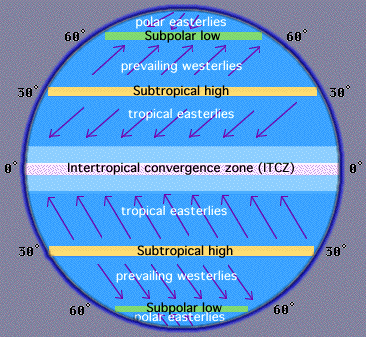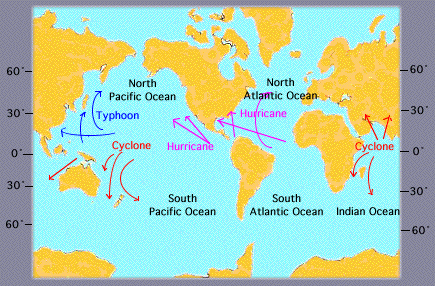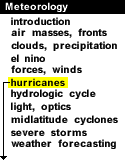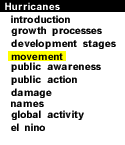
|
The global wind pattern is also known as the "general circulation" and the surface winds of each hemisphere are divided into three wind belts:
- Polar Easterlies: From 60-90 degrees latitude.
- Prevailing Westerlies: From 30-60 degrees latitude (aka Westerlies).
- Tropical Easterlies: From 0-30 degrees latitude (aka Trade Winds).

The easterly trade winds of both hemispheres converge at an area near the equator called the "Intertropical Convergence Zone (ITCZ)", producing a narrow band of clouds and thunderstorms that encircle portions of the globe.
The path of a hurricane greatly depends upon the wind belt in which it is located. A hurricane originating in the eastern tropical Atlantic, for example, is driven westward by easterly trade winds in the tropics. Eventually, these storms turn northwestward around the subtropical high and migrate into higher latitudes. As a result, the Gulf of Mexico and East Coast of the United States are at risk to experience one or more hurricanes each year.

In time, hurricanes move into the middle latitudes and are driven northeastward by the westerlies, occasionally merging with midlatitude frontal systems. Hurricanes draw their energy from the warm surface water of the tropics, which explains why hurricanes dissipate rapidly once they move over cold water or large land masses.

Hurricanes |
|

public awareness |



